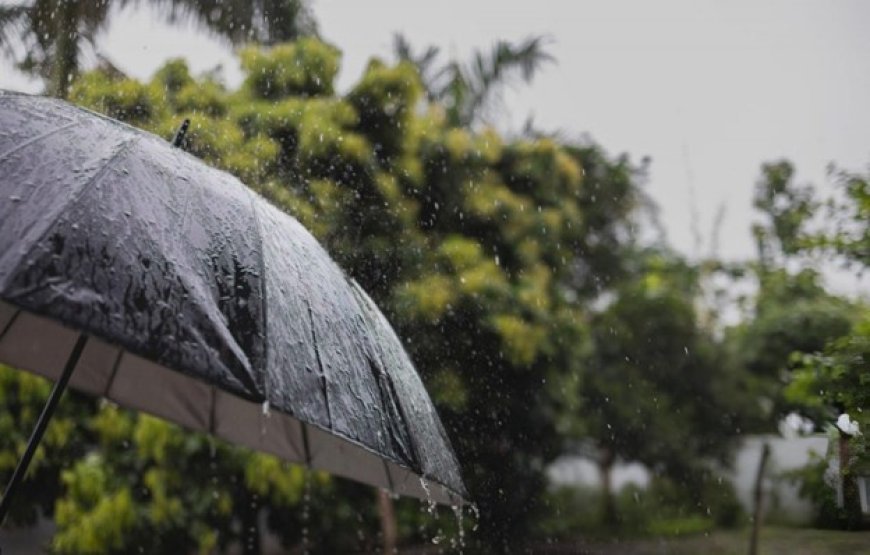PDMA Issues Heavy Rain & Flood Warning for Punjab
PDMA issues flood and heavy rain warning for Punjab as PMD tracks Arabian Sea storm heading toward Sindh. Karachi, Tharparkar, and Punjab at risk of flash flooding. Authorities on high alert.

The Punjab Disaster Management Authority (PDMA) has issued a fresh flood and heavy rain warning for Punjab, while the Pakistan Meteorological Department (PMD) has cautioned that a developing storm in the northeast Arabian Sea may also trigger rainfall, gusty winds, and urban flooding risks in parts of Sindh, including Karachi, over the coming days.
According to the PMD, a strong low-pressure area that formed earlier this week near India’s Saurashtra coast has now moved westward into the northeast Arabian Sea, around 310 kilometers southeast of Karachi. Meteorologists predict that the system will further intensify into a tropical depression within the next 12 hours, carrying the potential to unleash heavy rainfall, thunderstorms, and strong winds in coastal and southern Sindh.
Sindh Braces for Coastal Impact
Under the influence of this system, Karachi and at least 11 southern Sindh districts — including Tharparkar, Umerkot, Badin, Thatta, Mirpurkhas, and Sujawal — are expected to experience light to moderate rainfall with wind speeds reaching up to 55 km/h on Tuesday.
The PMD warning also highlighted the risk of structural damage from lightning strikes, strong winds, and falling objects. Fragile infrastructure such as mud houses, billboards, solar panels, electricity poles, and poorly constructed buildings could face severe damage.
Authorities have strongly advised fishermen to avoid venturing into open seas until at least October 3, as rough to very rough sea conditions are forecast.
Punjab Faces New Flood Threats
While Sindh faces a potential tropical depression, the PDMA Punjab has warned of heavy to very heavy rainfall between October 5 and October 7 due to a westerly weather system approaching from Afghanistan and northern Pakistan.
The PDMA alert warns that upper catchments of the Indus, Ravi, Sutlej, and Chenab rivers could receive intense rainfall, raising concerns of flash flooding, urban flooding, and overflow risks in low-lying districts.
Currently, water levels at the Guddu, Sukkur, and Kotri barrages remain normal, but authorities are on high alert as any sudden surge from upstream rainfall could overwhelm river embankments.
Humanitarian Crisis Deepens
This latest warning comes at a time when Pakistan is already reeling from one of its most devastating monsoon seasons in recent memory.
-
Since late June, more than 1,000 lives have been lost nationwide due to flooding.
-
Over 4.7 million residents in Punjab alone have been affected.
-
Nearly 4,700 villages remain inundated, leaving 2.5 million people displaced.
-
Extensive crop damage has been reported, particularly in cotton, rice, and sugarcane fields, threatening the province’s agricultural backbone and food security.
Authorities fear that another round of torrential rains could worsen the already fragile situation, placing millions at risk of homelessness, hunger, and waterborne diseases.
Karachi Weather Outlook
In Karachi, weather conditions are expected to remain humid and partly cloudy, with daytime temperatures ranging between 33°C and 36°C. Occasional drizzle or light showers may occur through Friday, while hot and dry weather will persist in other parts of Sindh not directly affected by the tropical system.
Urban planners have raised concerns over drainage blockages and waterlogging risks in Karachi, which in past rain spells have resulted in severe traffic jams, power outages, and infrastructure breakdowns.
Authorities on High Alert
Both the Sindh and Punjab disaster management authorities have directed district administrations, deputy commissioners, and disaster monitoring committees to stay on round-the-clock alert. Local authorities have been tasked with:
-
Conducting 24/7 monitoring of rainfall patterns.
-
Ensuring emergency rescue teams remain mobilized.
-
Keeping medical camps, food reserves, and shelter facilities ready for displaced families.
-
Submitting daily situation reports to provincial and federal authorities.
The NDMA (National Disaster Management Authority) has also been briefed, while coordination with the Army and Rangers remains an option should emergency rescue and evacuation operations become necessary.
Long-Term Concerns
Climate experts have repeatedly warned that Pakistan’s vulnerability to extreme weather events is increasing due to climate change, poor urban planning, and outdated flood infrastructure. The country, ranked among the top 10 most climate-vulnerable nations, faces recurring threats of glacial melt, monsoon flooding, and tropical cyclones.
Dr. Safdar Hussain, a senior climate scientist, noted:
“These repeated weather shocks highlight Pakistan’s urgent need to invest in resilient infrastructure, strengthen river embankments, and modernize early warning systems. Otherwise, we risk repeating the devastation of 2022 floods that left over 33 million people affected.”
Precautionary Measures for Citizens
Disaster authorities have issued the following public safety guidelines:
-
Avoid unnecessary travel during heavy rains.
-
Stay away from low-lying flood-prone areas.
-
Secure solar panels, vehicles, and household items from strong winds.
-
Keep emergency kits, drinking water, and medicines ready.
-
Fishermen should strictly follow the ban on sea travel until conditions improve.
Conclusion
With both Sindh and Punjab bracing for extreme weather, authorities have placed local administrations on high alert to mitigate disaster risks. However, with millions already displaced and floodwaters still inundating thousands of villages, the fresh warnings highlight the urgency of proactive measures to protect lives, crops, and infrastructure from another wave of destruction.

 Mohammad Adil
Mohammad Adil